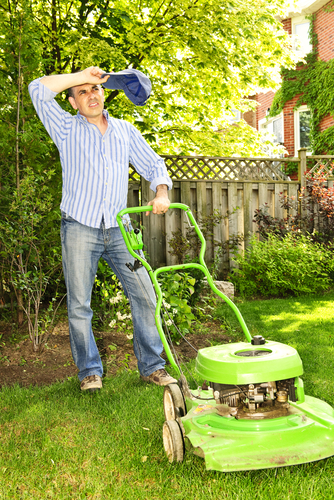Key Takeaways
Summertime lawn care offers:- Sprinkler Check: Ensure sprinklers are correctly aimed to prevent water waste.
- Watering Adjustment: Increase watering times for deeper soil penetration, avoiding short, shallow cycles.
- Fertilizer Application: Apply slow-release fertilizers for sustained lawn nourishment.
- Mower Height: Raise the mower height to reduce stress on your lawn during hot periods.
Summertime is here and it is time to make sure that your lawn and lawn equiptment is not neglected. It is very common for people to apply that first fertilizer application, set the sprinkler timers for spring conditions, and then think that the lawn will be just fine the rest of the season. But just as the weather changes and gets hotter, your lawn's demand will also change for what it needs to keep the lush green that it had in the spring. Below are some tips that I would recommend to consider to keep your lawn and lawn equiptment in tip top shape for the rest of the season.
1.) Check your Sprinklers:
It is very common for sprinkler heads to mysteriously rotate their direction and start watering the pavement instead of the lawn. This could be due to a mower knocking the sprinkler head, edger clipping the side of it, or even just a loose sprinkler head twisting on its own. Since most sprinkler settings are for early morning it is hard to visually see if all the sprinkler heads are still spraying in the correct direction. To check the system, manually activate the timer and double check that every sprinkler head is running correctly. This might involve manually replacing a broken sprinkler head (approximately $3-$15 per head), or just using a small flat head screw driver and some elbow grease to return the sprinkler to the correct position.
2.) Increase watering times:
If you are starting to see the lawn lighten up in color your lawn might need more water. Double check your watering times from what was originally set for the spring and either add another watering time or extend the current watering times a few more minutes. In the summer it is better to have a deep watering cycle so the roots of the grass extend deep into the soil instead of depending on short shallow watering application. This will help the turf in times of drought, but don't over water to the point where severe runoff is occurring.
3.) Fertilize:
This is a good time to apply a second round of fertilizer to your lawn. Most spring application (quick release fertilizer) will last between 4-6 weeks. It is recommended to apply a slower release fertilizer that will last for approximately 8-10 weeks. Ask your local fertilizer dealer for details about the benefits between quick release and slow release fertilizers to see what works best for your lawn.
4.) Increase mower height:
While most lawns can handle a shorter cut during the spring, the increased heat and periods of drought will cause extra stress on your lawn during the summer. Think of possibly increasing your mower height just one or two "notches" (approximately 1/4" to 1/2") higher than what the lawn was previously being mowed at.
5.) Check your equiptment:
This is a good time to see if you lawn mower and other equiptment needs any maintenance done on it. Check the oil level, sharpness of the mower blade, air filters, spark plugs, and edgers blades to see if anything needs to be replaced or maintained to help the life expectancy of your equiptment. This can either be done on your own with the help of an operation manual or by a local small engines shop for a rather minimal cost.





